Sausage casings are an essential part of making sausage. After all, when we have a look at what sausages are made of, we have, of course, the stuffing with the meat, the sausage seasoning, and the meat casing. After all, a sausage isn’t a sausage without something to stuff it in. But sausage casings are also important in ensuring your end product is flavorful, processed evenly, and has great texture.
The type of casing used is typically dictated by tradition but also varies by processing technique, ingredients, and size. Most sausage casings are natural, collagen or fibrous, with a wide array of sizes and applications depending on the type of sausage.
But what is the casing on sausage? Is the sausage casing edible? What are sausage casings made of? PS Seasoning professional chefs answer all your questions about sausage casings.
Table of Contents
What is the Casing on Sausage?
Sausage casing is the material that encases the filling of a sausage. Natural sausage casings are usually made of animal intestines but can also be made from collagen, or cellulose material.
What are Sausage Casings Made of?
Generally, sausage casings are made either from beef or sheep intestines, collagen, or cellulose. Though more rare, some sausage casings are made of plastic such as lunch meat and bologna.
Types of Sausage Casings
Natural Casings
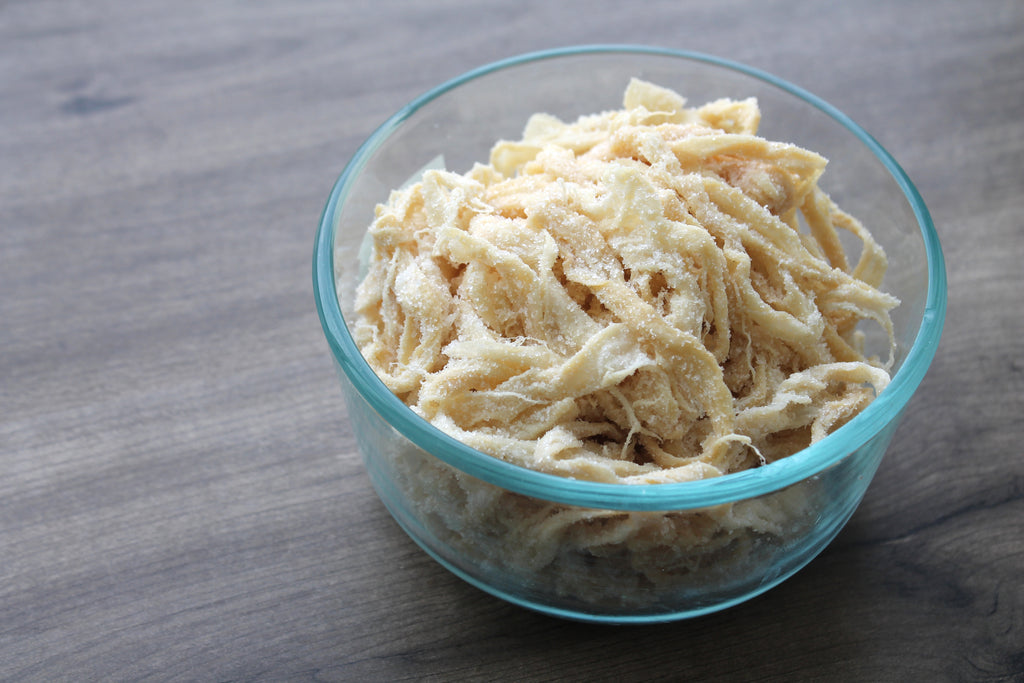
Natural sausage casings are made from the submucosa of the small intestine, a layer of the intestine that consists of naturally occurring collagen. The use of natural casing goes back centuries — it’s one of the oldest forms of sausage-making, a classic in the sausage tradition. They are the most popular choice today because of the “snap” they make when bitten. Natural sausage casings are also flexible, tender, easy to stuff, and are durable enough to hold up to smokehouse processing. Natural casings are commonly used for fresh sausage, smoked sausage, snack sticks, brats and more. Your natural sausage casings will come either packed in salt or a saline solution. The saline solution is designed for quick use, so once you rinse them off, you can use them within about 30 minutes after soaking in warm water. If salt-packed (in other words, heavily salted), you need to rinse off the salt from the natural casings, soak them in cold water and run cold water through them. After about half an hour of soaking in warm water, they can be used for stuffing sausages. These natural casings can be repacked in salt and stored in the freezer for up to a year.
Hog casings
Hog casings are the traditional choice when making any type of link sausage like bratwurst, Italians, and kielbasa. This type of natural casing is also commonly used for making smoked polish sausages, ring bologna with a small diameter and landjäeger.
29-32 mm Small Brats • Link Sausage • Landjaeger 32-35 mm Brats • Italian Sausage • Rope Sausage 35-38 mm Polish • Kielbasa 38-42 mm Bologna
Sheep casings
Sheep casings are the most tender of the natural casings. The smaller diameter of sheep casings makes the perfect for making small link sausages like breakfast sausage and hot dogs, to snack sticks.
20-22 mm Breakfast Sausage • Small Snack Sticks 22-24 mm Breakfast Sausage • Snack Sticks 24-26 mm Small Hot Dog • Wiener 26-28 mm Large Hot Dog • Wiener • Landjaeger
Beef Rounds
Beef rounds get their name from their characteristic round shape. They have minimal fat and are ideal for fresh, cooked or smoked sausage such as Ring Bologna, Polish, Mettwurst, Holsteiner, and Blood Sausage. These beef casings are very heavily salted in order to conserve them, so you need to rinse them in cold water then run warm water through them. The best treatment is to soak the beef casings overnight in cold water and soak them in warm water for about 30 minutes before beginning your sausage stuffing work.
Beef Middles
Beef middles are straight long casings that have a heavier texture wall with some fat. These beef casings are ideal for dry and semi-dry sausages like Salami, Liverwurst, Bologna, or Summer sausage.
Beef Bung Caps
Made from the end of a cow’s large intestine, beef bungs are large-diameter sausage casings that are typically used for large bologna, headcheese, souse, capicola, and mortadella.
Shop Natural Casings
Collagen Casings
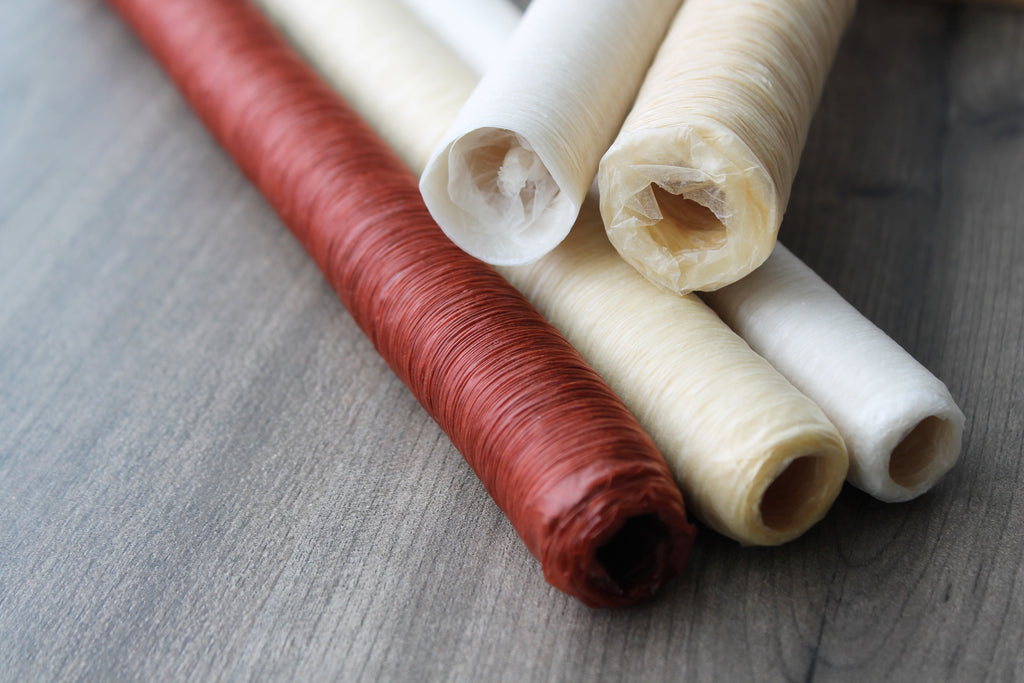
What is a collagen casing? Collagen casings are processed, edible sausage casings produced from the collagen in cow or pig hides, bones, and tendons. While they don’t give much of a snap, they’re inexpensive and give more uniformity in weight and size compared to their natural counterparts. Collagen casings are packaged in sheets around a tube that can easily be loaded on your stuffing horn, with no soaking required. They come in two varieties based on processing:
Fresh Collagen Casings
As the name implies, fresh collagen casings are used specifically for fresh sausages like bratwurst and breakfast links. These tend to be more tender casings that are unable to withstand hanging in a smokehouse.
Smoked Collagen Casings
Smoked or processed collagen casing are a bit stronger and thicker than fresh collagen to hold up to the processing schedule in the smokehouse, and can be used for making snack sticks, ring bologna, hot dogs or wieners. Their durability holds up well when hung on smoke sticks during processing. Collagen casings are available in clear and mahogany colors (no taste variation).
19 mm Smoke Mahogany Small Snack Sticks 21 mm Fresh Clear Small Breakfast Sausages 21 mm Smoke Clear or Mahogany Snack Sticks 23 mm Smoke Clear Large Snack Sticks • Small Pepperoni 26 mm Smoke Clear Hot Dogs • Wieners 30 mm Fresh Clear Brats • Link Sausage 40 mm Smoke Clear Ring Bologna • Liver Sausage • Kielbasa 43 mm Smoke Clear Ring Bologna • Liver Sausage • Kielbasa
Shop Collagen Casings
Fibrous Casings
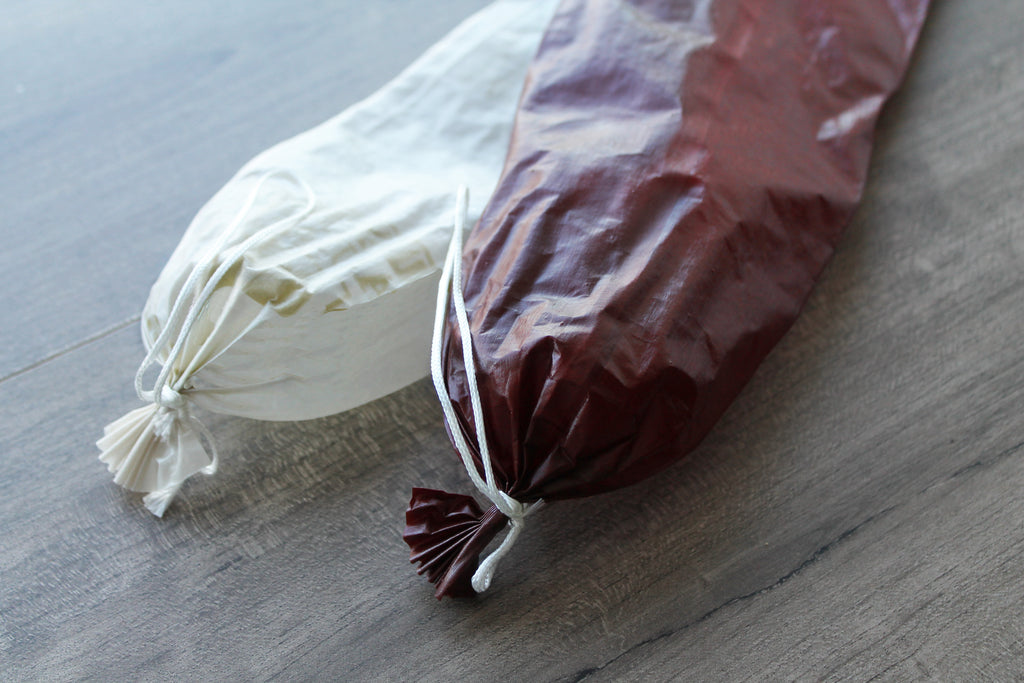
Fibrous casings are inedible sausage casings made from a form of cellulose material that peels away easily when cooked. They are also made from a specific tree called the Abaca. The fibers in the Abaca tree are very strong yet easy to work with — they’re very stretchable. Fibrous casings are most commonly used for making pepperonis, summer sausage, bologna, liverwurst, and other fine smoked sausages. Their durability allows tight stuffing, making them ideal for fine or emulsified sausages. Fibrous casings should be soaked for at least 25-30 minutes in warm water (80-100 F). Lay the sausage casings flat in warm water and submerge completely, with the tied ends lower so that any trapped air can escape. After soaking, squeeze excess water out before stuffing your sausages.
There’s two main kinds of fibrous sausage casings — clear and mahogany. You can also get them printed with a design. The benefit of a mahogany casing is you’ll get a consistent color when you are smoking the sausage.
1″ Thuringer • Pepperoni • Salami • Cracker-Sized Sausages 2-2.5″ Traditional Summer Sausage 4″ Large Summer Sausage • Hard Salami 8″ Olive & Pimento Loaf • Mortadella • Deli & Sandwich Meats
Shop Fibrous Casings





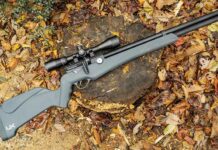
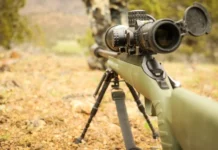


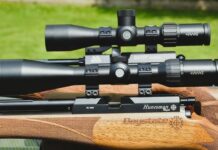

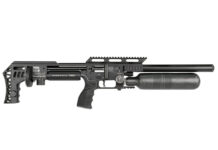
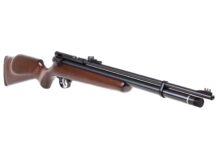
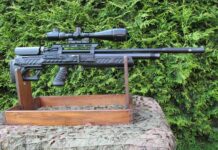

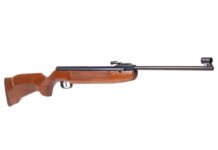

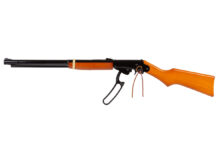

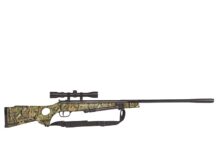






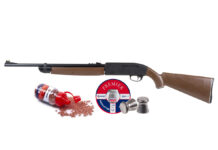


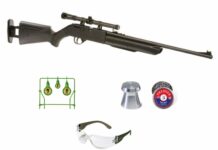
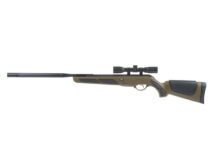
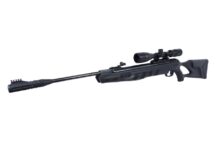

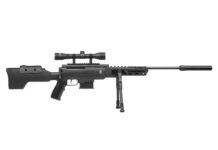





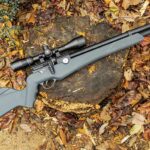



![Air gun 101: The differences between .177 & .22 – Which jobs they do best ? [Infographic]](https://airgunmaniac.com/wp-content/uploads/2024/11/1773-150x150.jpeg)